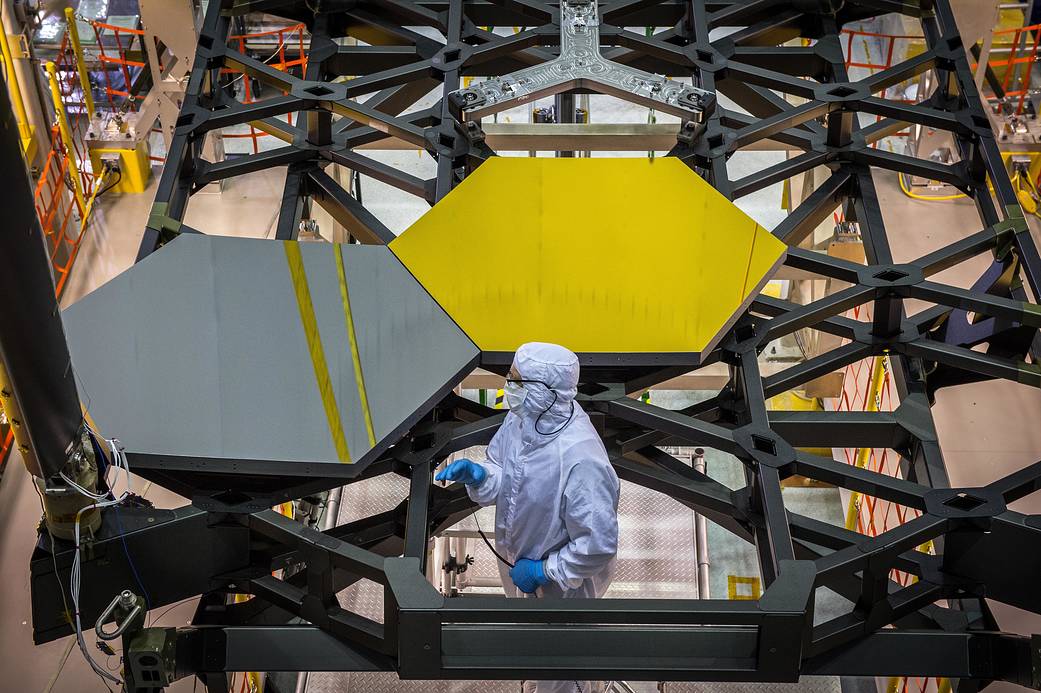Scientists and engineers placed two NASA James Webb Space Telescope test primary mirror segments onto the support structure that will hold them, where they resemble stepping stones, as seen in this photo.
There are four types of mirrors that will fly aboard NASA’s James Webb Space Telescope: The primary, secondary, tertiary and fine steering mirrors.
Together they will direct light into sensitive instruments, like stepping stones towards new discoveries about the cosmos.
Highly trained engineers and technicians from NASA, Exelis, and Northrop Grumman lifted the two test primary mirror segments in the photograph onto the support structure, working in a giant clean room at NASA’s Goddard Space Flight Center in Greenbelt, Maryland.
Both mirrors are made from beryllium. These primary mirror “test” segments are also flight spares. One of the mirrors is coated with a microscopically fine film of gold just like the actual flight mirrors, while the other is not. For the testing these mirrors will undergo, it is not critical that they all be gold-coated. The gold coating will enable the mirrors to most efficiently reflect the infrared light from distant galaxies.
“The gold-coated mirror is the engineering development unit and is a fully finished flight spare and is ready to fly if necessary, while the other is an almost-but-not-quite finished spare that needs a final round of polishing, cryotesting, or testing at freezing temperatures to simulate space, and gold coating, before it can be flown,” said Paul Geithner, deputy project manager – technical for the Webb telescope at NASA’s Goddard Space Flight Center in Greenbelt, Maryland.
Ball Aerospace & Technologies Corp. in Boulder, Colorado built the mirrors. Ball is the principal subcontractor to Northrop Grumman for the optical technology and lightweight mirror system. Ball Aerospace also developed the secondary mirror, tertiary mirror and fine-steering mirror.
As the premier observatory for the next decade, the Webb telescope will be stationed 1 million miles (1.5 million km) from Earth – some four times farther away from us than the moon. Webb will be the most powerful space telescope ever built, able to detect the light from the first galaxies ever formed and explore planets around distant stars. It will study every phase of our universe’s history, ranging from the first luminous glows after the Big Bang, to the formation of planetary systems capable of supporting life on planets like Earth, to the evolution of our own solar system.
The Webb telescope is a joint project of NASA, the European Space Agency and the Canadian Space Agency.
For more information about the Webb telescope, visit: www.jwst.nasa.gov or www.nasa.gov/webb
Photo credit: NASA/Chris Gunn
Rob Gutro
NASA’s Goddard Space Flight Center



























